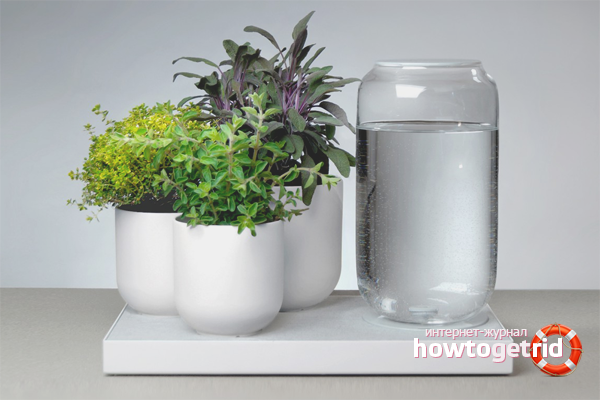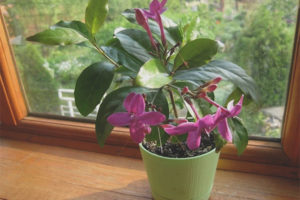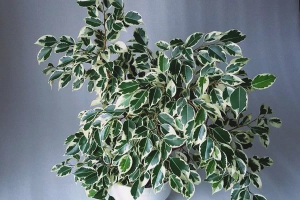The content of the article
The benefits of indoor flowers have been known for a long time. Enriching the air with oxygen and moisture, pleasing the eye with its beauty, they require constant care. When planning a vacation or a long trip, lovers of indoor plants, who have not had time to find those who look after the green guards, begin to overcome the alarming question - how will the flowers be watered during the absence of the host? Fortunately, this problem has long been resolved. It is enough to properly prepare the flowers for your departure, set the mechanism for automatic watering and you can go on a journey with a calm soul.
Preparing indoor plants for vacation
Indoor flowers left unattended for a long time, experts advise to prepare. You can do this as follows:
- A couple of weeks before departure, stop feeding plants with various additives. This is necessary in order to slow down their active growth and slightly reduce appetites.
- When 8-10 days are left until the desired vacation, carefully remove all diseased and diseased leaves.
- Immediately before departure, it is recommended to remove flower pots from the windowsills;
- Buds need to be cut. Thus, fluid intake is minimized. This should be done carefully, taking into account the ability of the plant to subsequently recover.
- Thoroughly spill the soil in the flower pot with water, and it is important not to overdo it. The earth should be saturated with liquid, but not wet. It will be possible to reduce the evaporation of moisture if you wrap the pot with a damp newspaper and cellophane on top.
- All pots are preferably placed in a large container with liquid poured on the bottom. However, they should not touch the water. Thus, it will be possible to achieve the desired level of humidity near green spaces.
- Around the leaves it makes sense to make a dome out of a transparent film. This procedure allows you to create something like a greenhouse.
- Clay pots would be nice to place in larger plastic vessels. Fill the resulting void between the walls with expanded clay soaked in water.
Homemade Auto Watering Systems
Everyone can cook independently simple mechanisms for automatic watering at home.
Wicks
You will need a fabric that absorbs moisture well. It is cut into strips from which wicks are twisted. One end of the device is buried in the soil of a flower pot, the other is placed in a container of water. As the soil dries, the wick will moisturize it. Moreover, it should not just be wetted with water, but should absorb it well. This must be followed. Important! Such a wick method can be used for up to 10 days.
The disadvantage of this method is that the tissue flagellum dries quickly in the heat, and the liquid will enter the ground in small volumes. To improve the situation, it is recommended to purchase special wicks and rods made of porous ceramic. With such devices, drying out can be avoided.
Medical droppers
An excellent auto-irrigation system will come from droppers used in medicine. One end is placed in a container with liquid, the other - in the ground, preferably closer to the edge of the pot. Leaving for a short time, it is better to use the clamp provided with the dropper.
When planning a long departure, it is recommended to close the tube, punctures in it a small hole. Or make the clearance in the needle narrower.
Alternatively, you can place a porous atomizer at the end of the tube (these are usually used to supply air to the aquarium).
Plastic bottles
A fairly simple, but quite effective method using plastic bottles. Such a container is filled with liquid up to the neck. A small hole is made in the lid, which closes the bottle. The resulting device is turned upside down and screwed into the soil of the pot. Water, gradually flowing through the hole in the lid, will moisten the soil. To speed up watering, the bottom of the bottle should be punctured. It is important to ensure that the hole is very small. In this case, water will not leak out more than expected and rotting will be avoided.
Automatic irrigation mechanisms
If you do not have time or desire to arrange an automatic watering system yourself, then you can buy ready-made and convenient mechanisms in any flower shop. Their high cost is justified by reliability and efficiency in use.
- Gardena - a device that allows for metered watering for indoor flowers that need different amounts of moisture. The system, powered by the mains, provides plants with water once every 24 hours. One device is capable of watering several pots at once.
- Bloomath - a mechanism consisting of a narrow ceramic cone and a silicone tube. Stick the cone into the ground, fill with water and close. The end of the tube is immersed in a bowl of liquid. Moisture will gradually be absorbed into the ground, seeping through the porous walls of the device. As the water leaves the cone, a new portion will come from the vessel through the tube.
- Oasis - A convenient, completely autonomous system containing 25 liters of fluid. The unit drives the battery. He is able to water up to 20 pots for 2-5 weeks.
- RAIN SMART - Domestic system of metered automatic irrigation, powered by electricity. Able to dispense from 50 ml at a time. up to 3.5 liters of moisture. Watering frequency can be adjusted.
Smart pots for automatic watering
If the upcoming long absence became known in advance, you can purchase special pots. A few months before the trip, indoor plants are transplanted into such containers, consisting of three parts:
- top (for soil);
- middle (intermediate layer consisting of a mesh material);
- bottom (for water).
You need to plant flowers in such a pot in the most usual way, and take care too. But when several months have passed, the roots of the plant will sprout through the middle mesh layer and the flower will receive the necessary moisture already from the lower reservoir.
Hydrogel will solve the problem of drought
Many gardeners use a special hydrogel. Unique polymer granules are capable of absorbing huge volumes of liquid. The crystals are pre-soaked in water for 7-8 hours. Once in the liquid, they begin to absorb it intensively, increasing in size. Then this moisture is dosed and given to the root system of plants. Moreover, with an excess of liquid, the hydrogel absorbs it back.
How to care for plants after returning
Those who have used the autowatering methods described above are not in danger of unexpected surprises in the form of dried, withered, or ruined indoor flowers. Upon returning, it is necessary to carefully inspect each plant, remove rotted or dried parts. Soil the soil in the pots with water through the lower watering.
Exposing plants immediately is not recommended. Better to accustom them to bright lighting gradually.
Care for indoor plants during a period of prolonged absence of a person is necessary. Automatic or self-made irrigation systems are a great option for those who could not find a “nanny” for their green garrison.
Video: how to water flowers during the holidays











Submit